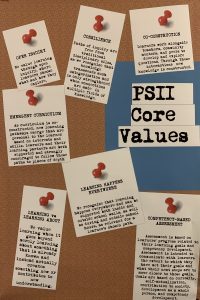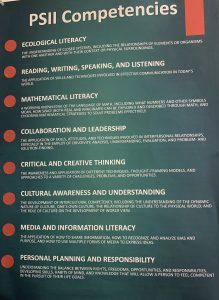Hello C’s Class
Assistive technology are devices that increase, maintain, or improve students with learning setbacks. It’s easy to think of “assistive technology” as technology itself, but it can be as simple as a pencil grip or as complex as some of the programs that are available in our classrooms today. Assistive technology is all about helping students progress towards their goals lined out on their IEP (Individual Educational Plans). Assistive technology also has goals of helping students learn how to complete a task and help bypass an area of difficulty. Students can listen to audiobooks and avoid reading, and focus on the computer screen as words are read aloud so they can learn unfamiliar words.
So as we, Kaylyn, Aria, and Casey, explore the different ways assistive technology can be used in the classroom, we are going to look at all the different kinds of sources, levels, and devices that can be used.
As said before, technology in the classroom that aids in helping students can range from low to mid to high technological appreciation. Most of the technology that helps students with disabilities is high tech, but as educators it is important to know how these devices can be incorporated within their teaching to promote an inclusive learning environment. Today, we are going to be looking at technology that is beneficial to students with learning disabilities.
First we have Graphic organizers. These help the students who have a hard time putting their thoughts onto paper, as well as the visual learners who need to see their ideas mapped out. While these can be done without technology to allow students to improve their quality of writing, using graphic organizations on the computer can allow students to arrange their thoughts without worrying about order, importance, or categories because the text can be easily changed and moved around.
Next, there are iPad-like devices called Pentop computers that aid in text-to-speech programs and strategy feedback. They are cheaper than iPads and may be a useful tool for students with learning disabilities. Pentop computers can give auditory feedback during math work or writing, and are a vital tool for students with learning disabilities. They can easily provide reminders while a kid is working on a math problem, and can be utilized for its note-taking skills.
Lastly, students with learning disabilities often have a hard time with their development of math. Research states that calculators can almost provide an unfair advantage to those students with math setbacks. Graphing calculators can be effective for the visual data to be seen, but only partially. Math drill programs are said to aid in the developmental process of learning how to solve math questions and increasing motivation in the addition and subtraction skills of students with math disabilities. Math Trek 1, 2 ,3 is an example of a program used in the classroom, as well as many more that are available for teachers to utilize in their diverse classrooms.
I hope you enjoyed this blog post on learning a couple different ways to aid in helping students with learning disabilities! We will talk to you soon!
Catch ya later!
XO
Aria, Kaylyn, and Casey








